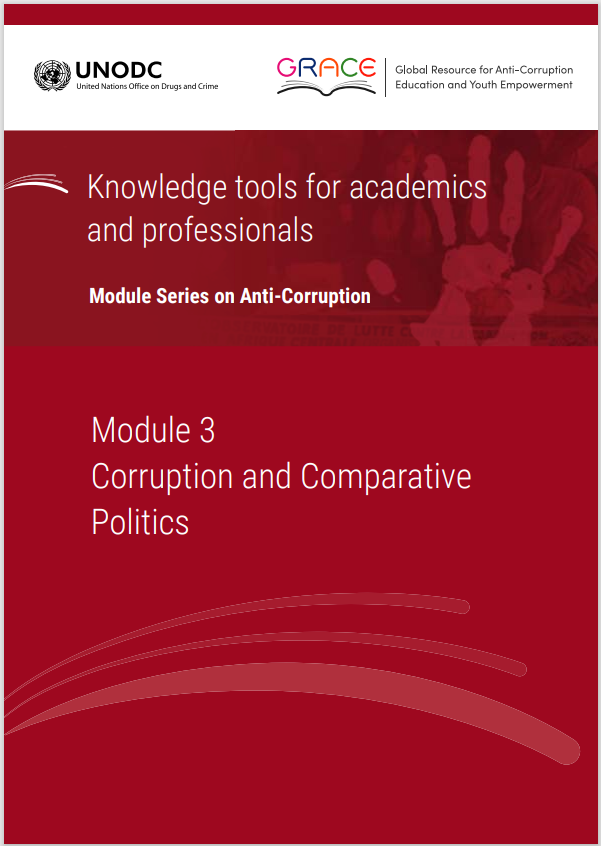This module is a resource for lecturers
Corruption and authoritarian systems
Although there are more authoritarian than democratic systems in the world (see the Freedom House map for 2019), corruption in non-democratic systems has received considerably less attention from the scholarly community than corruption in democratic ones (Hollyer and Wantchekon, 2011). Owing to restrictions on freedom of information and media, it is generally difficult to collect data on rule of law issues in non-democratic systems, and it is particularly difficult to accurately capture something as concealed as the level of corruption across autocracies. In hybrid and authoritarian regimes, corruption can be both a cause and effect of the authoritarian leader's power (Yadav and Mukherjee, 2015).
Authoritarian regimes are extremely varied and diverse in their systems, policies and ideologies. They include monarchies, military systems, clergy-dominated systems, and communist regimes. Their aims and methods range from seeking a totalitarian control of thought through indoctrination to seeking recognition as a multiparty democracy through using semi-competitive elections (Brooker, 2014).
Studies show that the control over the generation and distribution of rents based on corrupt transactions is one of the most important instruments autocratic leaders use to attain and consolidate their power among key elites and constituents (Alon and others, 2016). The low public accountability in autocratic regimes creates high incentives to build coalitions to distribute rents to cronies, and autocratic rulers have strong incentives to engage in corruption (Bueno de Mesquita and others, 2003; Yadav and Mukherjee, 2015).
Yet, the level and dynamics of corruption vary substantially across authoritarian regimes, and depend on complex domestic politics (Zaloznaya, 2015). While there are democracies with high levels of corruption, there are also non-democracies with relatively low levels of corruption. Ruling elites in many authoritarian regimes, including single-party authoritarian States and military dictatorships, have taken concrete anti-corruption measures that were publicly lauded by the World Bank (Kukutschka, 2018). Some authoritarian countries have been successful in fighting corruption (examples are discussed in Kukutschka, 2018). Key determinants for success in anti-corruption efforts are political will and sustainability of the efforts. Political will is mostly expressed by introducing and implementing relevant reforms in areas such as public financial management, and by establishing independent anti-corruption agencies or launching "zero tolerance" policies.
Kukutschka (2018, pp. 6-7) examines in detail the various reasons for the engagement of authoritarian rulers in anti-corruption strategies. What follows is a summary of his discussion. The two main variables that determine whether authoritarian rulers engage in anti-corruption reforms: 1) the need to ensure the survival of the regime; and 2) the nature of the ruling coalition. For example, Chang and Golden (2010) demonstrate that the time horizon of the autocratic leader (i.e. the ruler's expectation to remain in power for a shorter or longer period of time) and the nature of the ruling coalition explain the different levels of corruption across autocracies. In general, short-lived regimes tend to be more corrupt, although there are some notable exceptions. Regarding the nature of the ruling coalition, Chang and Golden show that personalistic regimes (e.g. hereditary or family dictatorships) and personalistic-hybrid regimes tend to be more corrupt than single party and military regimes. Similarly, Fisman and Golden (2017) argue that single-party regimes are slightly less corrupt than military personalistic regimes. Among the different types of non-democratic regimes, however, monarchies are seen as the least corrupt (Kukutschka, 2018). It is supposed that monarchs might have more incentives to keep corruption in check to maintain a good reputation and ensure the survival of the regime for their descendants (Fisman and Golden, 2017). The discussion here illustrates some of the ways in which corruption manifests and how its effects vary relative to political regime and context.
Many autocratic countries that control corruption to a satisfactory degree share high levels of human development and efficient State control (Pring and Vrushi, 2019; Kukutschka, 2018). Furthermore, this progress depends entirely on the continued goodwill of a small circle of senior decision makers, rather than on the features of the political system (Sutton, 2017). Still, ordinary citizens in these States lack resources, channels and institutions such as a free media and impartial judicial systems, that can enable them to participate in the fight against corruption and to ensure that anti-corruption measures are applied fairly and effectively. Owing to weak legal systems or lack of independent media and oversight bodies, citizens may have no one to protect their interests and advocate for them (Yadav and Mukherjee, 2015). For a more detailed discussion about the risks and limitations of citizen and media participation in anti-corruption efforts in non-democratic regimes, see Module 10 of the E4J University Module Series on Anti-Corruption and Module 10 of the E4J University Module Series on Integrity and Ethics. For a related discussion on the role of the media in shaping narratives about corruption see Cheng (2017).
It should be noted, however, that even when anti-corruption measures are implemented in non-democratic systems, this does not necessarily mean that corruption will be eliminated (as in the case of democracy or hybrid regimes). While some autocracies have managed to control petty and bureaucratic corruption, the forms of corruption that benefit the ruling elite tend to remain unchanged (Kukutschka, 2018). At the same time, political scientists still have an incomplete understanding of the extent, dynamics, policy performance and policymaking in authoritarian systems. In the end, it depends on political, economic and societal conditions as well as anti-corruption demands that are raised by key societal actors and institutions that incentivize authoritarian leaders to be responsive to these demands that will lead to lower corruption levels in these countries (Yadav and Mukherjee, 2015).
 Next:
Hybrid systems and syndromes of corruption
Next:
Hybrid systems and syndromes of corruption
 Back to top
Back to top
